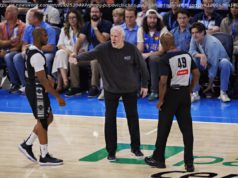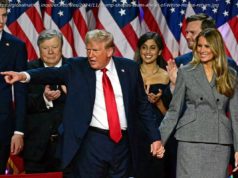In addition to losing a spectacular player, the Giants will take a big salary cap hit because of the Beckham trade. So where do they go from here?
On Nov. 23,2014, in a nationally televised Sunday night game against the Dallas Cowboys, Odell Beckham Jr., then a Giants rookie, leapt high in the end zone, twisted as he arched backward, fought off a defender and made a fingertip, one-handed touchdown grab that seemed unfathomable even in slow motion replay.
The next day, Beckham’s acrobatics had physicists, mechanical engineers and sports scientists scratching their heads.
“It was a bit like Spider-Man,” said Jim Gates, a professor of physics at the University of Maryland. “A near superhuman activity.”
In that moment — in just the seventh game of a nascent pro career — Beckham’s place in N.F.L. lore was cemented.
Within months, he had won the league’s Offensive Rookie of the Year award, played in the Pro Bowl and became the youngest player ever to grace the cover of the omnipresent Madden N.F.L. video game. Beckham’s No. 13 jersey quickly became the hottest-selling football apparel nationwide. He was the new face of the storied Giants franchise.
It is hard to believe that a little more than four years later, Beckham has been brusquely jettisoned from the team. On Tuesday, the popular, if sometimes mercurial, Beckham was traded to the Cleveland Browns for Jabrill Peppers, a safety with a modest record of N.F.L. achievement, and two draft picks (the 17th and 95th of next month’s draft) that, while valuable, are not likely to yield a star of Beckham’s magnitude.
Beckham’s mystifying departure may be a window into a new N.F.L., in which players and teams can transition from seemingly amicable partners — Beckham signed a five-year, $90 million contract extension with the Giants about six months ago — to rivals on opposing sidelines faster than ever before.
Star players were once bound to teams for many years because restrictive guidelines made unfettered free agency hard to achieve.






